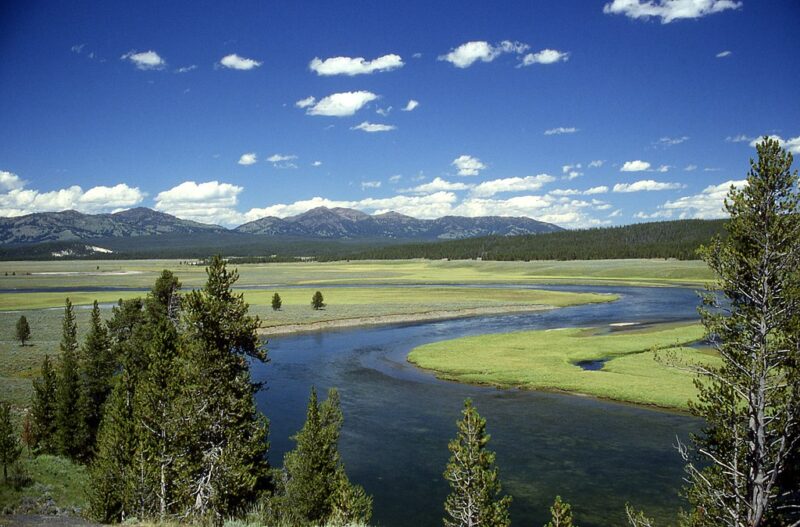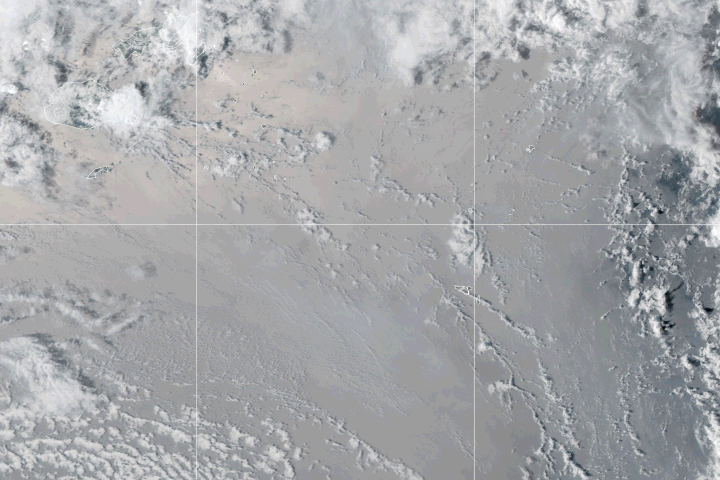
- A new study challenges the notion that volcanic super-eruptions would lead to significant global cooling.
- Supervolcanoes add particles to the atmosphere that can both block sunlight to cool and trap outgoing heat energy to warm the planet.
- This study may mean we are a long way from artificially adding particles to our atmosphere to geoengineer a solution to global warming.
NASA published this original article by Sally Younger on March 1, 2024. Edits by EarthSky.
Supervolcanoes wouldn’t cause major cooling
New research suggests that sunlight-blocking particles from an extreme eruption would not cool surface temperatures on Earth as severely as previously estimated.
Some 74,000 years ago, the Toba volcano in Indonesia exploded with a force 1,000 times more powerful than the 1980 eruption of Mount St. Helens. The mystery is what happened after that: namely, to what degree that extreme explosion might have cooled global temperatures.
When it comes to the most powerful volcanoes, researchers have long speculated how post-eruption global cooling – sometimes called volcanic winter – could potentially pose a threat to humanity. Previous studies agreed that some planet-wide cooling would occur but diverged on how much. Estimates have ranged from 3.6 to 14 degrees Fahrenheit (2 to 8 C).
In a new study in the peer-reviewed Journal of Climate, a team from NASA’s Goddard Institute for Space Studies (GISS) and Columbia University in New York used advanced computer modeling to simulate super-eruptions like the Toba event. They found that post-eruption cooling would probably not exceed 2.7 degrees Fahrenheit (1.5 C) for even the most powerful blasts.
Lead author Zachary McGraw, a researcher at NASA GISS and Columbia University, said:
The relatively modest temperature changes we found most compatible with the evidence could explain why no single super-eruption has produced firm evidence of global-scale catastrophe for humans or ecosystems.
To qualify as a super eruption, a volcano must release more than 240 cubic miles (1,000 cubic km or 240 cubic miles) of magma. These eruptions are extremely powerful … and rare. The most recent super-eruption occurred more than 22,000 years ago in New Zealand. The best-known example may be the eruption that blasted Yellowstone Crater in Wyoming about 2 million years ago.

Small particles, big questions
McGraw and colleagues set out to understand what was driving the divergence in model temperature estimates because:
… models are the main tool for understanding climate shifts that happened too long ago to leave clear records of their severity.
They settled on a variable that can be difficult to pin down: the size of microscopic sulfur particles injected miles high into the atmosphere.
In the stratosphere (about 6 to 30 miles in altitude or 10,000 to 50,000 meters), sulfur dioxide gas from volcanoes undergoes chemical reactions to condense into liquid sulfate particles. These particles can influence surface temperature on Earth in two counteracting ways. They can reflect incoming sunlight (causing cooling) or trap outgoing heat energy (a kind of greenhouse warming effect).
Over the years, this cooling phenomenon has also spurred questions about how humans might turn back global warming, in what’s called geoengineering. The idea is to intentionally inject aerosol particles into the stratosphere to promote a cooling effect.
The researchers showed to what extent the diameter of the volcanic aerosol particles influenced post-eruption temperatures. The smaller and denser the particles, the greater their ability to block sunlight. But estimating the size of particles is challenging. That’s because previous super-eruptions have not left reliable physical evidence. In the atmosphere, the size of the particles changes as they coagulate and condense. Even when particles fall back to Earth and become preserved in ice cores, they don’t leave a clear-cut physical record because of mixing and compaction.
Simulations to the rescue
By simulating super-eruptions over a range of particle sizes, the researchers found that super-eruptions may be incapable of altering global temperatures dramatically more than the largest eruptions of modern times. For instance, the 1991 eruption of Mount Pinatubo in the Philippines caused about a .5 degree drop in global temperatures for two years.
Luis Millán, an atmospheric scientist at NASA’s Jet Propulsion Laboratory in Southern California, who was not involved in the study, said that the mysteries of super-eruption cooling invite more research. He said the way forward is to conduct a comprehensive comparison of models, as well as more laboratory and model studies on the factors determining volcanic aerosol particle sizes.
Given the ongoing uncertainties, Millán added:
To me, this is another example of why geoengineering via stratospheric aerosol injection is a long, long way from being a viable option.

Bottom line: It was long thought supervolcanoes could cause eruptions that could blot out sunlight and result in major cooling on Earth. A new study says not so fast.











